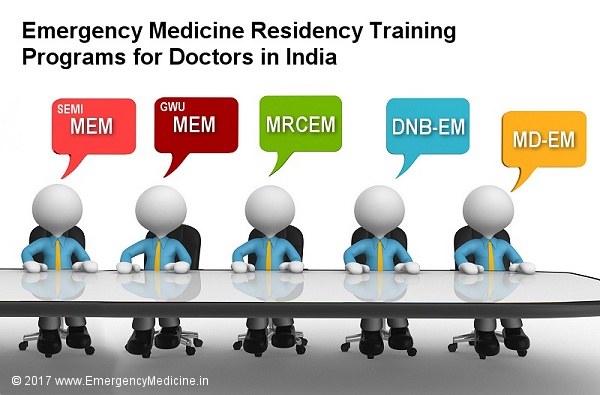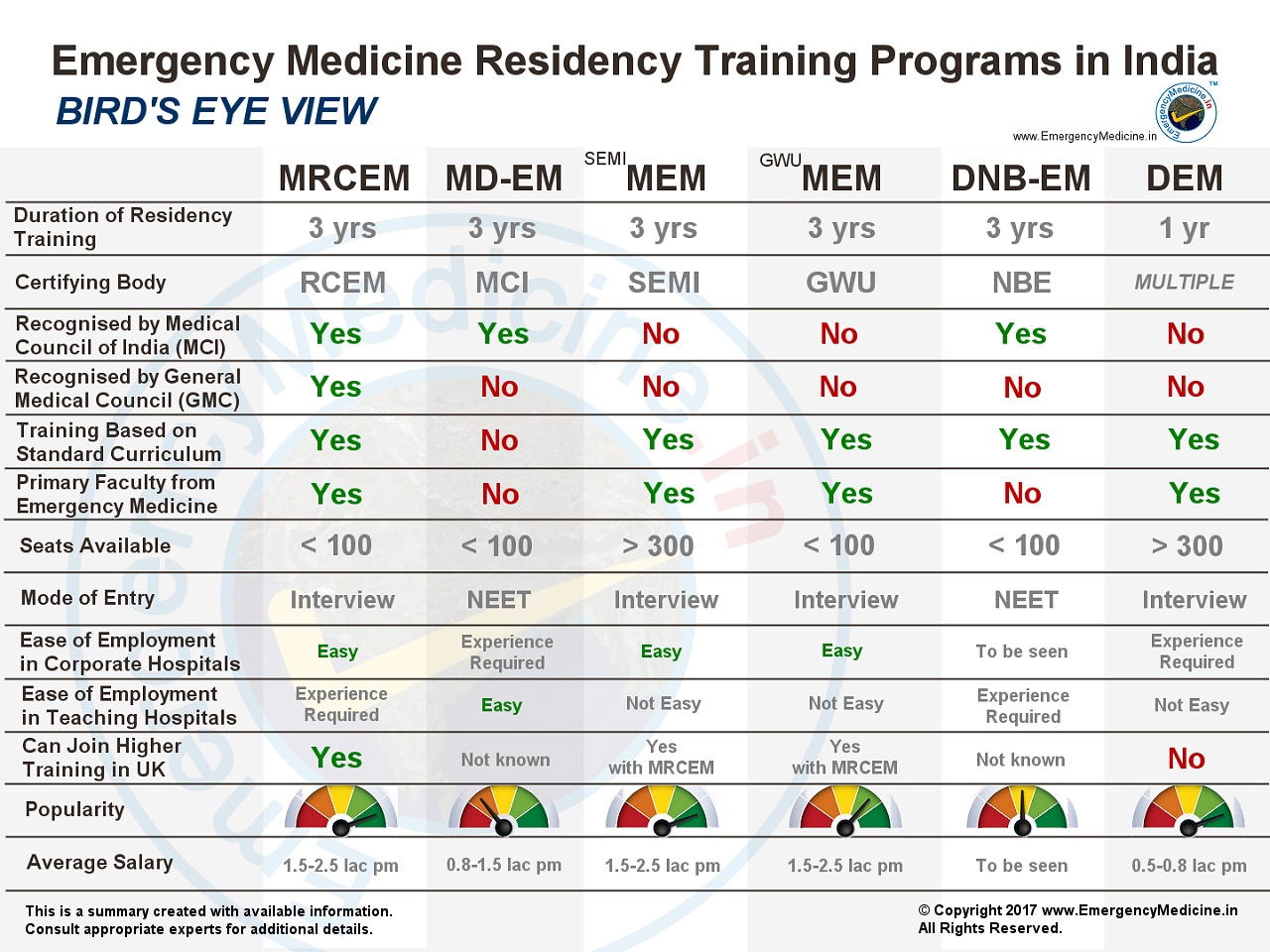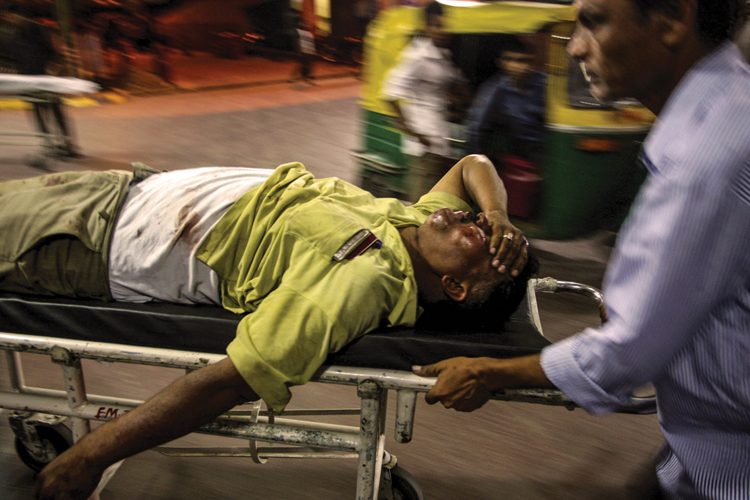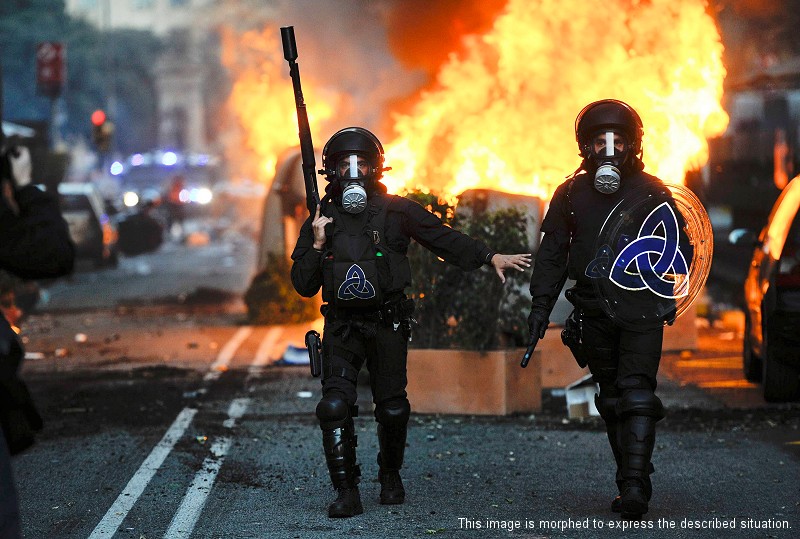EmergencyMedicine.in
EMinside
Favorites
Recommended
ATLS India - Advanced Trauma Life Support
 atls.in
atls.in 
American College of Emergency Physicians
 acep.org
acep.org
College of Emergency Medicine, United Kingdom
 rcem.ac.uk
rcem.ac.uk
Australasian College of Emergency Emergency Medicine
 acem.org.au
acem.org.au
 atls.in
atls.in 
American College of Emergency Physicians
 acep.org
acep.orgCollege of Emergency Medicine, United Kingdom
 rcem.ac.uk
rcem.ac.ukAustralasian College of Emergency Emergency Medicine
 acem.org.au
acem.org.auLet Others Know
Verified Site
Visitor Stats
Enemies of Emergency Medicine Development in India - LOW TOXICITY
Enemies of Emergency Medicine Development in India - LOW TOXICITY
26-Feb-2018
Editors Desk
Reference/share this article - https://www.emergencymedicine.in/current/news.php?readmore=201

Although we havent put up many posts over the last couple of years, our network (which is always active) has made plenty of interesting observations, especially about people working (or claiming to work) for emergency medicine (EM) development in India. Most senior & junior staff are working in a myriad of emergency departments (ED), maintaining a collective culture and are heading generally in the right direction.
There are also morons and hooligans in the system. And these crooks are the ones we were watching for quite some time. With our adaptive camouflage enabled, we mingled with them, we observed them, we heard them speak, we looked at what they were doing, where they were working, who they hang around with, their modus operandi, their online world, their offline world, their projects, what gossip they were spreading around, their regularity, what their mentors and proteges were doing, and just about everything else. And whoa! We really got to know a lot of stuff. Our analysis has led us to designate these crooks as the Enemies of Emergency Medicine Development in India, categorise their toxicity, and keep you informed.
Check out the LOW TOXICITY ENEMIES below and enjoy!
Remember, there are always exceptions and those who have been rehabilitated after temporary insanity. If you are fitting perfectly into a description, either you can change for the better, or go cry to your mom. If you are a novice or trainee in Indian EM, "For God's sake, be careful out there!"
_______________________________________________________

AGENT - 420
Alias - Char so bees (420 in Hindi)
Indian Penal Code 420 - Cheating and dishonestly inducing delivery of property.
One who misrepresents himself/herself in meetings, conversations and documents.
The strength of an Agent-420 lies in deception and stealth, hence always works alone. They claim to work in EM departments but are not emergency physicians. Although they have very high IQ, they will not be able to resuscitate any seriously ill patients.
420 agents are extremely good at confusing and convincing their targets into believing something. They dress well and speak fluently. Their targets are usually high value individuals in a group, like a keynote speaker or a govt official. An Agent-420 will put on a guise of an office bearer of a big organization when speaking to their targets.
Agent-420s are known to claim that they are official representatives of MCI, NBE, AHA, SEMI and other societies, and various Ministries. It is impossible to detect 420 agents, unless you are aware of them.
They fraudulently represent an organization. Always check their credentials by taking their business cards and VERIFY.
Click button to download alert card (275Kb jpeg)

_______________________________________________________

COMMODE HERO
Alias - Commode Warrior, Lavatory Lunatic
One who constantly posts, replies, debates, argues, criticises all aspects of EM activities in India, from his/her toilet. Wastes time.
Commode warriors usually work alone or with 1-2 partners. They hang around in EM related Whatsapp/Facebook/Twitter groups and monitor important announcements. As soon as they find anything appealing they begin their alleged constructive criticism without any direction or evidence. They regularly add emotional outbursts to conversation. They never help anyone officially, do not attend meetings, and avoid any real-life discussions or confrontations. They have low IQ.
Commode warriors are known to leak confidential letters, emails, documents and private photographs. They also blindly assist major online wards initiated by other EM lunatics and baby monkeys.
Rarely, they may assist projects when guided by mentors. Some post useful advice or journal links every morning at 5am.
They are not a direct threat. But are always a roadblock to any important group of multicentric initiative. IGNORE.
Click button to download alert card (275Kb jpeg)

_______________________________________________________

PLAGIA-RAT
Alias - Copycat
One who plagiarizes (copies) everything in EM (articles, letters, logos, ideas, concepts, projects, collaborations, etc). No originality.
Common plagia-rats are found everywhere. They copy all kinds of literature, including thesis books, project reports, journal articles, textbook chapters, images & photos, official letters, conference schedules, workshop handbooks & videos, logos, branding, etc.
Plagia-rats are known to fabricate clinical and patient data in their publications. They are also known to alter national statistics and delete crucial information in order to promote themselves or their connected organization. One rat has more than a hundred publications to its name. Plagia-rats will defend, if confronted.
Groups of plagia-rats have been seen working together to shoplift ideas from SEMI, IFEM, and other international EM organizations, and have successfully set up predatory conferences & meetings.
If data fabrication is detected, report to editors. They cannot be trusted for anything. Do not hang around them. AVOID.
Click button to download alert card (275Kb jpeg)

_______________________________________________________

PSEUDO PUNDIT
No aliases
One who is from another specialty, but has moved into EM, intentionally or forced into. Has attained EM nirvana in one single day.
Pseudo pundits are great doctors and teachers, but only within the domain of their primary PG specialty. They have never worked in their career, as emergency physicians, alongside other ER staff. They do not know how an ambulance works. They do not hold any qualifications in EM. Some may show EM certificates secured via distance education method. Those forced into EM are unhappy.
Pseudo pundits are bad teachers for EM, as they lack the intrinsic qualities and clinical acumen of a 24x7 ER doctor. They also tend to mis-manage patients not falling under their primary specialty. They are usually in a negative mindset about EM qualified doctors. Most EM trainees working under them have delayed milestones.
Some pundits may do productive work with EM physicians.
They retard development of EM specialty, both within a hospital, and at community level. RELOCATE ASAP.
Click button to download alert card (275Kb jpeg)

_______________________________________________________
More to be released soon
Want to comment on the ALERT CARDS ? - CLICK HERE
Copyright ©2018 EmergencyMedicine.in All Rights Reserved.
Unauthorized reproduction of this article is prohibited without written permission from the administrator
.
26-Feb-2018
Editors Desk

Reference/share this article - https://www.emergencymedicine.in/current/news.php?readmore=201

Although we havent put up many posts over the last couple of years, our network (which is always active) has made plenty of interesting observations, especially about people working (or claiming to work) for emergency medicine (EM) development in India. Most senior & junior staff are working in a myriad of emergency departments (ED), maintaining a collective culture and are heading generally in the right direction.
There are also morons and hooligans in the system. And these crooks are the ones we were watching for quite some time. With our adaptive camouflage enabled, we mingled with them, we observed them, we heard them speak, we looked at what they were doing, where they were working, who they hang around with, their modus operandi, their online world, their offline world, their projects, what gossip they were spreading around, their regularity, what their mentors and proteges were doing, and just about everything else. And whoa! We really got to know a lot of stuff. Our analysis has led us to designate these crooks as the Enemies of Emergency Medicine Development in India, categorise their toxicity, and keep you informed.
Check out the LOW TOXICITY ENEMIES below and enjoy!
Remember, there are always exceptions and those who have been rehabilitated after temporary insanity. If you are fitting perfectly into a description, either you can change for the better, or go cry to your mom. If you are a novice or trainee in Indian EM, "For God's sake, be careful out there!"
_______________________________________________________

AGENT - 420
Alias - Char so bees (420 in Hindi)
Indian Penal Code 420 - Cheating and dishonestly inducing delivery of property.
One who misrepresents himself/herself in meetings, conversations and documents.
The strength of an Agent-420 lies in deception and stealth, hence always works alone. They claim to work in EM departments but are not emergency physicians. Although they have very high IQ, they will not be able to resuscitate any seriously ill patients.
420 agents are extremely good at confusing and convincing their targets into believing something. They dress well and speak fluently. Their targets are usually high value individuals in a group, like a keynote speaker or a govt official. An Agent-420 will put on a guise of an office bearer of a big organization when speaking to their targets.
Agent-420s are known to claim that they are official representatives of MCI, NBE, AHA, SEMI and other societies, and various Ministries. It is impossible to detect 420 agents, unless you are aware of them.
They fraudulently represent an organization. Always check their credentials by taking their business cards and VERIFY.
Click button to download alert card (275Kb jpeg)

_______________________________________________________

COMMODE HERO
Alias - Commode Warrior, Lavatory Lunatic
One who constantly posts, replies, debates, argues, criticises all aspects of EM activities in India, from his/her toilet. Wastes time.
Commode warriors usually work alone or with 1-2 partners. They hang around in EM related Whatsapp/Facebook/Twitter groups and monitor important announcements. As soon as they find anything appealing they begin their alleged constructive criticism without any direction or evidence. They regularly add emotional outbursts to conversation. They never help anyone officially, do not attend meetings, and avoid any real-life discussions or confrontations. They have low IQ.
Commode warriors are known to leak confidential letters, emails, documents and private photographs. They also blindly assist major online wards initiated by other EM lunatics and baby monkeys.
Rarely, they may assist projects when guided by mentors. Some post useful advice or journal links every morning at 5am.
They are not a direct threat. But are always a roadblock to any important group of multicentric initiative. IGNORE.
Click button to download alert card (275Kb jpeg)

_______________________________________________________

PLAGIA-RAT
Alias - Copycat
One who plagiarizes (copies) everything in EM (articles, letters, logos, ideas, concepts, projects, collaborations, etc). No originality.
Common plagia-rats are found everywhere. They copy all kinds of literature, including thesis books, project reports, journal articles, textbook chapters, images & photos, official letters, conference schedules, workshop handbooks & videos, logos, branding, etc.
Plagia-rats are known to fabricate clinical and patient data in their publications. They are also known to alter national statistics and delete crucial information in order to promote themselves or their connected organization. One rat has more than a hundred publications to its name. Plagia-rats will defend, if confronted.
Groups of plagia-rats have been seen working together to shoplift ideas from SEMI, IFEM, and other international EM organizations, and have successfully set up predatory conferences & meetings.
If data fabrication is detected, report to editors. They cannot be trusted for anything. Do not hang around them. AVOID.
Click button to download alert card (275Kb jpeg)

_______________________________________________________

PSEUDO PUNDIT
No aliases
One who is from another specialty, but has moved into EM, intentionally or forced into. Has attained EM nirvana in one single day.
Pseudo pundits are great doctors and teachers, but only within the domain of their primary PG specialty. They have never worked in their career, as emergency physicians, alongside other ER staff. They do not know how an ambulance works. They do not hold any qualifications in EM. Some may show EM certificates secured via distance education method. Those forced into EM are unhappy.
Pseudo pundits are bad teachers for EM, as they lack the intrinsic qualities and clinical acumen of a 24x7 ER doctor. They also tend to mis-manage patients not falling under their primary specialty. They are usually in a negative mindset about EM qualified doctors. Most EM trainees working under them have delayed milestones.
Some pundits may do productive work with EM physicians.
They retard development of EM specialty, both within a hospital, and at community level. RELOCATE ASAP.
Click button to download alert card (275Kb jpeg)

_______________________________________________________
More to be released soon
Want to comment on the ALERT CARDS ? - CLICK HERE
Unauthorized reproduction of this article is prohibited without written permission from the administrator
.
Deciphering Emergency Medicine Training Programs in India
Deciphering Emergency Medicine Training Programs in India.
16-Jul-2017
Editors Desk
Reference/share this article - http://www.emergencymedicine.in/current/news.php?readmore=199

The emergency medicine (EM) academic engine is running in India since the late 90s, when the first 1 year structured Fellowship programs in EM (FEM) took birth at Christian Medical College (CMC) Vellore, Johns Medical College Bangalore, and Apollo Hospitals Hyderabad. Apart from FEM (also known as Diploma EM or DEM), six other important initiatives are responsible for churning out trained and qualified emergency physicians in the country.
1 - Institutes like Sri Ramachandra Medical College at Chennai, Vinayaka Mission Hospital at Salem, and others, began the first 3 year MD (Accident & Emergency Medicine) or MD (A&E) which was placed under regulations of respective college Universities. These deemed university MD (A&E) programs were in existence when Medical Council of India (MCI) had not recognized EM. The first 3-year residency qualified EM physicians are from these MD (A&E) programs and they remain a formidable workforce in EM even today. MD(A&E) is no longer available.
2 - The collaboration of Apollo Hospitals with the Royal College of Emergency Medicine (RCEM) UK, resulted in the start of the 3 year MRCEM residency training program at Apollo Hospitals Hyderabad in 2005, and opening of RCEM overseas examination centers at Hyderabad and other cities. Apollo hospitals in 4 other cities also started the same training in 2010. MRCEM has remained highly credible due to its difficult examinations and its recognition by the MCI.
3 - George Washington University (GWU) USA, in association with various private hospitals in Kerala, New Delhi, Kolkata and Durgapur, launched a 2 year International Fellowship in EM in 2007. This program was later upgraded to become the 3 year Masters in Emergency Medicine (GWU-MEM). GWU-MEM is popular for its visiting international faculty.
4 - The Society for Emergency Medicine India (SEMI), which was already running 1 year DEM, also formally announced the start of its 3 year Masters in Emergency Medicine (SEMI-MEM) at Columbia Asia Hospitals Bangalore in 2011. SEMI-MEM training programs have been rapidly adopted by more than 100 hospitals across India, primarily due its extremely low training fees and strict standards maintained.
5 - EM specialty was officially recognised by the MCI in July 2009, and the first MD-EM postgraduate training (recognised by MCI) commenced at B J Medical College and NHL hospital, Gujarat, in June 2010. MD-EM was welcomed by the entire EM community as it signified official recognition. However, scarcity of seats, teaching by non-EM faculty and high capitation fees (in some colleges) have reduced this program's popularity.
6 - The National Board of Examinations (NBE), which is an independent academic body in India, also recognised EM in July 2013 and took their first trainees under DNB-EM postgraduate training in October 2014. Hospitals which were running MEM programs facilitated the adoption of DNB-EM. Teaching by non-EM faculty has put the future of DNB-EM under threat.
___________________________________________________________________________________
The resultant EM physicians have not only brought quality emergency patient care within their own EM departments, but also helped the academic spread of the EM specialty. Majority of them, especially doctors from the first four groups, are doing incredible work within the domain of EM and its sub-specialties, including EMS. Their growth has been widespread, persistent, effective and silent.
It is important to note that both MCI and NBE, in order to adhere to their uniform teaching regulations, made a fundamental error in program design for EM specialty. They designated doctors from other medical/surgical specialties (i.e internal medicine, general surgery, anesthesia, respiratory medicine and orthopedics) to teach EM to new trainees. Such a move may mirror decisions made in the past, in Western countries, but many believe this is completely unnecessary especially when experienced EM faculty are already available in abundance in India. It is for this reason that the true EM faculty have gyrated towards non-MCI and non-NBE programs and elevated the quality of EM trainees enrolled in these programs.
Today there are multiple pathways and mixed opportunities for a career in EM in India. A birds eye view of the current training programs can be seen in the image below. This would help any interested person to get a fair initial comparison. The compiled statistics is as per data available in first half of 2017. Online distance education programs like FACEE, etc are excluded in this comparison as they do not impart EM residency training.

Click on image to view at full resolution 1280x960
___________________________________________________
Update on Dec 2017
Use the link below to reference or share this article
http://www.emergencymedicine.in/current/news.php?readmore=199
___________________________________________________
Copyright ©2017 EmergencyMedicine.in All Rights Reserved.
Unauthorized reproduction of this article is prohibited without written permission from the administrator
.
16-Jul-2017
Editors Desk

Reference/share this article - http://www.emergencymedicine.in/current/news.php?readmore=199

The emergency medicine (EM) academic engine is running in India since the late 90s, when the first 1 year structured Fellowship programs in EM (FEM) took birth at Christian Medical College (CMC) Vellore, Johns Medical College Bangalore, and Apollo Hospitals Hyderabad. Apart from FEM (also known as Diploma EM or DEM), six other important initiatives are responsible for churning out trained and qualified emergency physicians in the country.
1 - Institutes like Sri Ramachandra Medical College at Chennai, Vinayaka Mission Hospital at Salem, and others, began the first 3 year MD (Accident & Emergency Medicine) or MD (A&E) which was placed under regulations of respective college Universities. These deemed university MD (A&E) programs were in existence when Medical Council of India (MCI) had not recognized EM. The first 3-year residency qualified EM physicians are from these MD (A&E) programs and they remain a formidable workforce in EM even today. MD(A&E) is no longer available.
2 - The collaboration of Apollo Hospitals with the Royal College of Emergency Medicine (RCEM) UK, resulted in the start of the 3 year MRCEM residency training program at Apollo Hospitals Hyderabad in 2005, and opening of RCEM overseas examination centers at Hyderabad and other cities. Apollo hospitals in 4 other cities also started the same training in 2010. MRCEM has remained highly credible due to its difficult examinations and its recognition by the MCI.
3 - George Washington University (GWU) USA, in association with various private hospitals in Kerala, New Delhi, Kolkata and Durgapur, launched a 2 year International Fellowship in EM in 2007. This program was later upgraded to become the 3 year Masters in Emergency Medicine (GWU-MEM). GWU-MEM is popular for its visiting international faculty.
4 - The Society for Emergency Medicine India (SEMI), which was already running 1 year DEM, also formally announced the start of its 3 year Masters in Emergency Medicine (SEMI-MEM) at Columbia Asia Hospitals Bangalore in 2011. SEMI-MEM training programs have been rapidly adopted by more than 100 hospitals across India, primarily due its extremely low training fees and strict standards maintained.
5 - EM specialty was officially recognised by the MCI in July 2009, and the first MD-EM postgraduate training (recognised by MCI) commenced at B J Medical College and NHL hospital, Gujarat, in June 2010. MD-EM was welcomed by the entire EM community as it signified official recognition. However, scarcity of seats, teaching by non-EM faculty and high capitation fees (in some colleges) have reduced this program's popularity.
6 - The National Board of Examinations (NBE), which is an independent academic body in India, also recognised EM in July 2013 and took their first trainees under DNB-EM postgraduate training in October 2014. Hospitals which were running MEM programs facilitated the adoption of DNB-EM. Teaching by non-EM faculty has put the future of DNB-EM under threat.
___________________________________________________________________________________
The resultant EM physicians have not only brought quality emergency patient care within their own EM departments, but also helped the academic spread of the EM specialty. Majority of them, especially doctors from the first four groups, are doing incredible work within the domain of EM and its sub-specialties, including EMS. Their growth has been widespread, persistent, effective and silent.
It is important to note that both MCI and NBE, in order to adhere to their uniform teaching regulations, made a fundamental error in program design for EM specialty. They designated doctors from other medical/surgical specialties (i.e internal medicine, general surgery, anesthesia, respiratory medicine and orthopedics) to teach EM to new trainees. Such a move may mirror decisions made in the past, in Western countries, but many believe this is completely unnecessary especially when experienced EM faculty are already available in abundance in India. It is for this reason that the true EM faculty have gyrated towards non-MCI and non-NBE programs and elevated the quality of EM trainees enrolled in these programs.
Today there are multiple pathways and mixed opportunities for a career in EM in India. A birds eye view of the current training programs can be seen in the image below. This would help any interested person to get a fair initial comparison. The compiled statistics is as per data available in first half of 2017. Online distance education programs like FACEE, etc are excluded in this comparison as they do not impart EM residency training.

Click on image to view at full resolution 1280x960
___________________________________________________
Update on Dec 2017
Use the link below to reference or share this article
http://www.emergencymedicine.in/current/news.php?readmore=199
___________________________________________________
Unauthorized reproduction of this article is prohibited without written permission from the administrator
.
Emergence of EMS in India
Emergence of EMS in India
15-Jun-2017
Journal Article!

Today, India boasts an EMS system thats expanded exponentially and geographically. Its gone beyond the early concepts, and the focus has shifted from being injury centric to covering all emergencies. Its changed from being urban oriented to being pan-India. Like in the United States, the primary focus is no longer on road traffic accidents. EMS is fast evolving as an integral part of healthcare system.
Click here to read - Emergence of EMS in India
Journal of Emergency Medical Services - April 2017
By Subroto Das, Roochita Desai
15-Jun-2017
Journal Article!

Today, India boasts an EMS system thats expanded exponentially and geographically. Its gone beyond the early concepts, and the focus has shifted from being injury centric to covering all emergencies. Its changed from being urban oriented to being pan-India. Like in the United States, the primary focus is no longer on road traffic accidents. EMS is fast evolving as an integral part of healthcare system.
Click here to read - Emergence of EMS in India

Journal of Emergency Medical Services - April 2017
By Subroto Das, Roochita Desai
Rebel doctors target practicing emergency physicians and EM trainees in India
Rebel Doctors Attack Practicing Emergency Physicians and EM Trainees in India.
17-Jun-2017
Editors Desk
Reference/share this article - http://www.emergencymedicine.in/current/news.php?readmore=197
Emergency medicine related social media channels, in the last 3-4 weeks, witnessed a sudden appearance of a group of rebel doctors who are criticising the currently practising emergency physicians and EM trainees in India. Deliberate messages and cartoons depicting the older EM training programs in bad light were posted and discussed, resulting in angry responses from the EM community in India. A specific outcry that all EM residency programs, with exception of MD(EM) and DNB(EM), were fake, was also circulating.
Incidentally, the small group doctors who were involved seem to be recent graduates of one specific training program, MD(EM). It is unknown what incident has provoked them to resort to this. Sources indicate that one of the reasons is that an external party has started a false propaganda in an attempt to defame the very large community of EM physicians predominantly working under the banner of the Society for Emergency Medicine India (SEMI). The second reason is that some of these MD(EM) graduates failed to qualify for top positions in the emergency departments of corporate hospitals. Poor quality of training resulting from teaching by non-EM faculty and ill-equipped emergency departments, are the main reasons to blame for this situation. Hospitals looking for EM physicians now routinely check potential applicants for adequate credible experience, irrespective of their EM qualification. It would not be a surprise to see hospital managers rejecting inexperienced EM physicians.
One senior MD(EM) graduate said that he found it surprising that doctors were resorting to flaming on social media channels. He said that after looking at their online conversations he found it very obvious that none of them were aware of the history of development in India. And that there was plenty of incorrect information being discussed and this was fuelling further pointless debates among other amateur groups. Another doctor who was also MD(EM) said that he never had any problems with any other group and that everyone was contributing to EM in their own positive way. He said that there was no problem in securing good jobs as long as one had gained proper competence. He agreed that only few hospitals had good teaching.
A senior resident undergoing MRCEM training pointed out that this group had concluded that MRCEM was not recognised by MCI, whereas the truth was that MRCEM was being registered as additional PG qualification for many years and was adequate for the post of Assistant Professor as per MCI notification in March 2017.
Click here to look at MCI Notification 11MAR17
UPDATE! 30-Jul-2017 - If MCI website has deleted the link, find it from our archive.
Many trainees of the Masters in Emergency Medicine (MEM) program were of opinion that they were happy with their training, experience and certification. They had absolutely no doubt about their job and career options, both in India and abroad, especially after looking at so many of their colleagues join higher specialist training in the United Kingdom. One trainee commented that instead of working together these rebel groups were resorting to such activities. She said it was clear that they have a lot of free time in their hands and are unlikely to be doing any constructive work for their own emergency rooms.

The recent online flaming incidents targeted at emergency physicians in India received a suspiciously coordinated boost from an unexpected source - Times of India, one of the leading newspapers in India. Times of India, on 8th June, published a very poorly researched and false article about emergency medicine residency programs in India. Facts & data were neither authentic nor correct, and statements which provoked hostilities within the EM community, were published. Majority of the EM pundits in India are of opinion that this is paid media operating for commercial gains. High quality journalism has gone to dogs, one said.
Click here to look at Illegal PG Degrees Plague Emergency Medicine_08JUN2017
Senior members within SEMI initially attempted to defuse rapidly developing conflicts via their internal channels, but when this proved futile, an emergency board circular was sent out to all SEMI members. SEMI is the oldest, largest and only organization representing emergency medicine professionals in India. It is a full member of the International Federation of Emergency Medicine (IFEM) and the only body representing India at IFEM.
Click here to look at SEMI Board Circular_08JUN2017
Contrary to expectations, the demand for the MEM training has suddenly shot up, with 4 more hospitals applying for the hugely popular MEM training program. A senior board member within SEMI said - We know what we are doing is absolutely right and for the need of the country. We have a huge responsibility towards our patients. And SEMI supports all academic training programs.
The emergency medicine environment in India seems to be now evolving and spreading at a faster pace than before. Lets keep watching!
EmergencyMedicine.in strongly condemns the publication of the scantily researched article - Illegal PG Degrees Plague Emergency Medicine - by Times of India.
We have received loads of screenshots from Whatsapp, Facebook and online forum conversations. These are not displayed here to protect identities of those involved.
Image (morphed to express the described situation)- Senior members of SEMI were successful in suppressing the developing conflicts within EM community.

Copyright ©2017 EmergencyMedicine.in All Rights Reserved.
Unauthorized reproduction of this article is prohibited without written permission from the administrator
17-Jun-2017
Editors Desk

Reference/share this article - http://www.emergencymedicine.in/current/news.php?readmore=197
Emergency medicine related social media channels, in the last 3-4 weeks, witnessed a sudden appearance of a group of rebel doctors who are criticising the currently practising emergency physicians and EM trainees in India. Deliberate messages and cartoons depicting the older EM training programs in bad light were posted and discussed, resulting in angry responses from the EM community in India. A specific outcry that all EM residency programs, with exception of MD(EM) and DNB(EM), were fake, was also circulating.
Incidentally, the small group doctors who were involved seem to be recent graduates of one specific training program, MD(EM). It is unknown what incident has provoked them to resort to this. Sources indicate that one of the reasons is that an external party has started a false propaganda in an attempt to defame the very large community of EM physicians predominantly working under the banner of the Society for Emergency Medicine India (SEMI). The second reason is that some of these MD(EM) graduates failed to qualify for top positions in the emergency departments of corporate hospitals. Poor quality of training resulting from teaching by non-EM faculty and ill-equipped emergency departments, are the main reasons to blame for this situation. Hospitals looking for EM physicians now routinely check potential applicants for adequate credible experience, irrespective of their EM qualification. It would not be a surprise to see hospital managers rejecting inexperienced EM physicians.
One senior MD(EM) graduate said that he found it surprising that doctors were resorting to flaming on social media channels. He said that after looking at their online conversations he found it very obvious that none of them were aware of the history of development in India. And that there was plenty of incorrect information being discussed and this was fuelling further pointless debates among other amateur groups. Another doctor who was also MD(EM) said that he never had any problems with any other group and that everyone was contributing to EM in their own positive way. He said that there was no problem in securing good jobs as long as one had gained proper competence. He agreed that only few hospitals had good teaching.
A senior resident undergoing MRCEM training pointed out that this group had concluded that MRCEM was not recognised by MCI, whereas the truth was that MRCEM was being registered as additional PG qualification for many years and was adequate for the post of Assistant Professor as per MCI notification in March 2017.
Click here to look at MCI Notification 11MAR17

UPDATE! 30-Jul-2017 - If MCI website has deleted the link, find it from our archive.

Many trainees of the Masters in Emergency Medicine (MEM) program were of opinion that they were happy with their training, experience and certification. They had absolutely no doubt about their job and career options, both in India and abroad, especially after looking at so many of their colleagues join higher specialist training in the United Kingdom. One trainee commented that instead of working together these rebel groups were resorting to such activities. She said it was clear that they have a lot of free time in their hands and are unlikely to be doing any constructive work for their own emergency rooms.

The recent online flaming incidents targeted at emergency physicians in India received a suspiciously coordinated boost from an unexpected source - Times of India, one of the leading newspapers in India. Times of India, on 8th June, published a very poorly researched and false article about emergency medicine residency programs in India. Facts & data were neither authentic nor correct, and statements which provoked hostilities within the EM community, were published. Majority of the EM pundits in India are of opinion that this is paid media operating for commercial gains. High quality journalism has gone to dogs, one said.
Click here to look at Illegal PG Degrees Plague Emergency Medicine_08JUN2017
Senior members within SEMI initially attempted to defuse rapidly developing conflicts via their internal channels, but when this proved futile, an emergency board circular was sent out to all SEMI members. SEMI is the oldest, largest and only organization representing emergency medicine professionals in India. It is a full member of the International Federation of Emergency Medicine (IFEM) and the only body representing India at IFEM.
Click here to look at SEMI Board Circular_08JUN2017

Contrary to expectations, the demand for the MEM training has suddenly shot up, with 4 more hospitals applying for the hugely popular MEM training program. A senior board member within SEMI said - We know what we are doing is absolutely right and for the need of the country. We have a huge responsibility towards our patients. And SEMI supports all academic training programs.
The emergency medicine environment in India seems to be now evolving and spreading at a faster pace than before. Lets keep watching!
EmergencyMedicine.in strongly condemns the publication of the scantily researched article - Illegal PG Degrees Plague Emergency Medicine - by Times of India.
We have received loads of screenshots from Whatsapp, Facebook and online forum conversations. These are not displayed here to protect identities of those involved.
Image (morphed to express the described situation)- Senior members of SEMI were successful in suppressing the developing conflicts within EM community.

Unauthorized reproduction of this article is prohibited without written permission from the administrator
India's Medical Miracle - 108 Emergency Number
India's Medical Miracle - 108 Emergency Number
05-Dec-2015
Editors Desk
Just 15 years ago, before India's national ambulance service, Indian citizens needing emergency medical attention were on their own.
On the occasion of its 15th anniversary, India's national ambulance service marks a major milestone. Hailed as perhaps one of the most important global health initiatives of the last ten years, the Emergency Management and Research Institute (EMRI), serves 750 million Indian citizens and has saved 1.5 million lives.
Emergency medicine physician S. V. Mahadevan and a team of experts from the Stanford School of Medicine have been with the program since its early inception. Collaborating closely with their Indian colleagues, they helped shape the current form of EMRI, its training programs, and capacity building efforts.
From
STANFORD CHANNEL, Stanford University, California USA
(If the video does not load, click here India's Medical Miracle)
05-Dec-2015
Editors Desk

Just 15 years ago, before India's national ambulance service, Indian citizens needing emergency medical attention were on their own.
On the occasion of its 15th anniversary, India's national ambulance service marks a major milestone. Hailed as perhaps one of the most important global health initiatives of the last ten years, the Emergency Management and Research Institute (EMRI), serves 750 million Indian citizens and has saved 1.5 million lives.
Emergency medicine physician S. V. Mahadevan and a team of experts from the Stanford School of Medicine have been with the program since its early inception. Collaborating closely with their Indian colleagues, they helped shape the current form of EMRI, its training programs, and capacity building efforts.
From
STANFORD CHANNEL, Stanford University, California USA
(If the video does not load, click here India's Medical Miracle)







